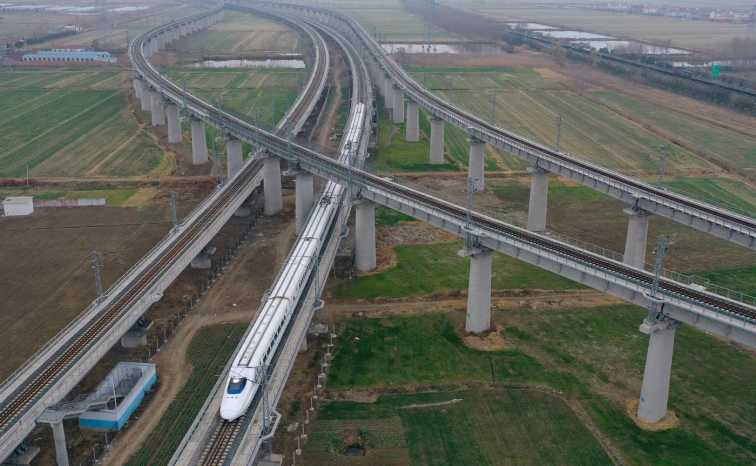
By 2021, China’s high-speed rail network extended over 40,000km and the government has indicated it plans to increase the network to 50,000km by 2025 and then to 70,000km by 2035. Each kilometre of high speed rail infrastructure costs between 120 million and 130 million yuan (300% more than conventional rail).
As of the end of 2021 China Rail Corporation’s debt and liabilities had reached 5.91 trillion yuan (US$882 billion) and equivalent to approximately 5% of China’s GDP.
China Rail Corporation issues bonds to state-owned banks and brokerages in order to fund infrastructure costs. What has been described as “concealed debt” enables the China government to borrow money without impacting on official national debt numbers.
Total liabilities for China Rail Corporation increased by 4% in 2021 to 5.91 trillion yuan. Group-wide revenue from the freight service was 435.9 billion yuan and passenger service revenue was 302.1 billion yuan.

The reality of China’s high speed rail system is that it has no freight capacity and is therefore totally reliant on passenger fare revenue.
China’s national railway system recorded an overall 49.8 billion yuan net loss for 2021 and total passenger numbers were down 29% from pre-pandemic levels at 2.53 billion for the year.
The Director of the China State Railways Administration, Lu Dongfu is reported to have said State Railways would monitor investment returns and manage the debt it owes to reduce risk. Good luck with that!
Rejigit has been writing about the worsening financial woes of China Evergrande Group, a property development conglomerate which is being crushed by debt estimated at US$300 – US$400 billion. Evergrande bond holders have every reason to be extremely worried.
http://www.rejigit.co.nz/vendor/article.php?uid=jd